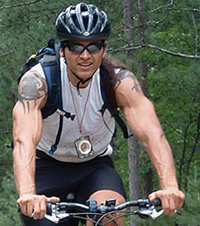
also in recreational:
about
advertise
subscribe
contact
site
map
Adventure racing, page 2
by kristin krupa
“[Adventure racing] is definitely a life skill-builder,” Hall says. “You’re always running into things you don’t want to do, but you push through them nonetheless to get them done. It’s the same way in a race.”
The sport is so tough that just finishing is considered an accomplishment, especially for a rookie. But unlike its multi-sport cousin, the triathlon, adventure races command athletes to combine strengths as a team to successfully compete not just against opposing teams, but also against the ruthless environment.
“I remember when one of our teammates bonked; [he] totally ran out of energy, he had nothing left,” recalls Hall. “That’s the time you really rely on your teammates and they make up the difference.”
Like any activity requiring teamwork, teams are only as strong as their weakest link. And strength is not just about enduring the elements––it’s also about relationships and interaction. To many racers, camaraderie is often considered one of the biggest benefits. But when frustration mixes with fatigue, teams can run into trouble. Misinterpreting a topographical map can devastate a team, setting them back hours and making them scramble through numbing darkness. But mistakes happen, even to the most experienced teams. That is just part of the sport’s character-building nature. However, teams that effectively learn how to combine their abilities and work as a unit benefit the most. This idea of team strategizing and problem solving has even inspired some companies to replace the company softball league with their own adventure racing team.
“Adventure racing is like a microcosm of life,” says AR’er Keith Lamb. Lamb, who carried 350 pounds on his 6-foot frame when he started adventure racing, has become an inspiration to many and is now in the best shape of his life. “You gather around a group of people that you can trust and count on. With these people, you take on the challenges put before you every day and hold on tight, finding a way over, around or under those obstacles.”
Despite its intimidating image, AR’ing welcomes a wide range of dedication. Weekend warriors interested in competing at a challenging but less rigorous level borrow bikes, canoes or other race equipment to participate. But die-hard, serious competitors may spend thousands of dollars on gear to race at a level that tolerates no weakness, demands incredible willpower, and puts athletes through considerable abuse.
After hours of kayaking at break-neck speeds, biking against high winds, and overexerting the body to the point of dehydration and collapse, the racers’ perplexing question still looms: “Why the hell do we do this again?”
To a non-AR’er, the answer may not be obvious. Hall fields the question while sitting at a student-sized desk in his middle school classroom, wearing a blue button-up shirt, grey slacks and black polished shoes. For a second, Tim Hall the aggressive adventure racer emerges; super-human, pain-enduring and thrill-thirsty.
“You kind of define yourself through torture,” Hall says, laughing. “The more you can put yourself through, the more you feel like you have accomplished. I guess that’s why it’s so addicting.”
|
||||
 |
||||
| need for speed: Six-foot Keith Lamb tipped the scale at 350 pounds but is now in the best shape of his life after getting addicted to adventure racing. photo: keith lamb |
||||
| adventure racing calendar: time flies when you're on the run find information about upcoming adventure races in the midwest. |
||||
related articles: Fit in fitness Making strides against cancer |
home
| professional
| recreational
| practical
| social
about | advertise
| subscribe
| contact
| site
map
curb magazine 2005: balance for wisconsin's young professionals
